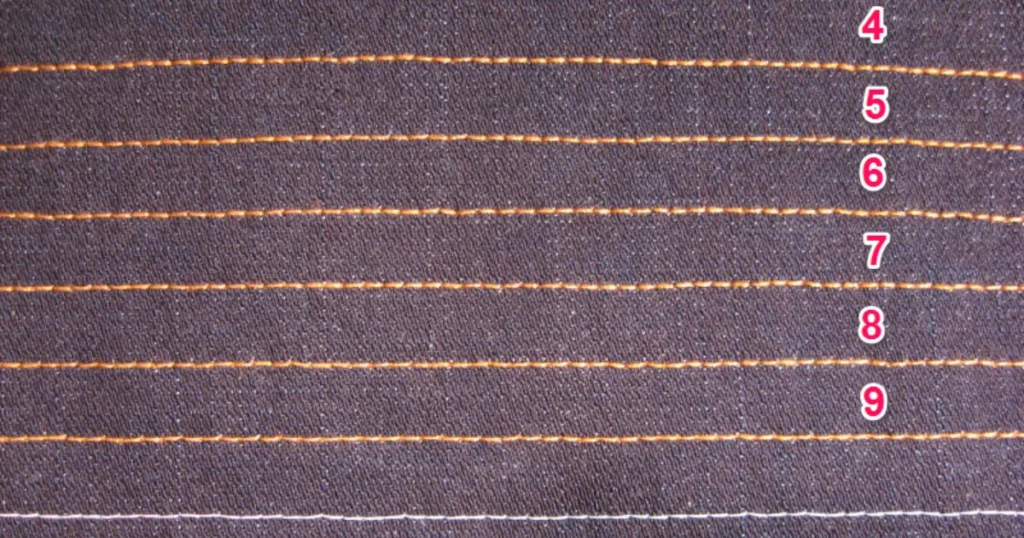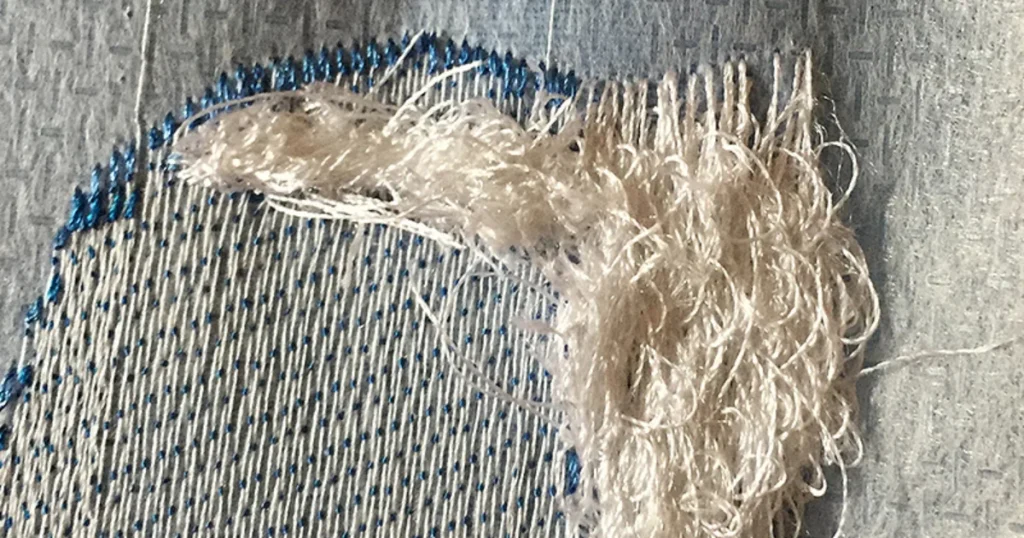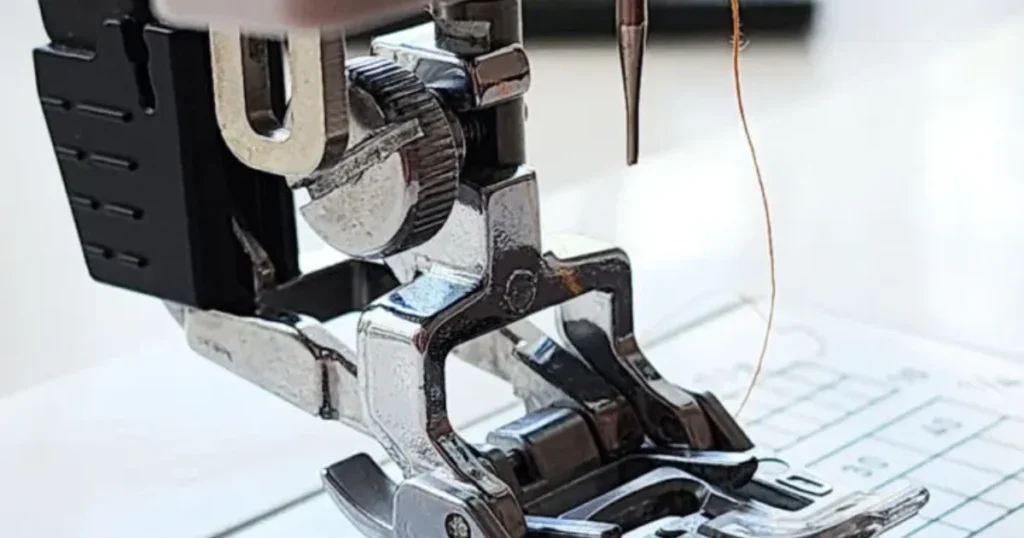Sewing enthusiasts know the frustration of a sewing machine that refuses to stitch properly. It can bring a halt to your creative projects and leave you feeling stuck. But worry not! In this comprehensive guide, you will learn how to fix a sewing machine not stitching.
Whether you’re a seasoned sewist or just starting your stitching journey, this article will equip you with the knowledge and solutions needed to overcome this common obstacle.
You can trust that the tips and techniques shared here have been tried and tested by sewing enthusiasts and professionals alike. So, let’s dive in and unravel the mysteries of sewing machine stitching issues together!
Sewing Machine Problems And Solutions:
When your sewing machine fails to stitch correctly, several factors could be responsible. Understanding the underlying causes is crucial for effective troubleshooting and repair.
Stitching problems can manifest in various ways, including thread tension issues, skipped stitches, uneven stitches, bird nesting (thread bunching), and other stitch quality problems. Identifying the specific problem will help you address it more effectively.
How To Fix Sewing Machine Not Stitching? GUIDE TO FOLLOW
Before diving into troubleshooting, it’s essential to examine the critical components of your sewing machine. This includes checking the needle and thread, inspecting the bobbin and bobbin case, evaluating tension settings, and reviewing other mechanical components.
When your sewing machine fails to stitch correctly, it can be frustrating. Understanding the underlying causes of stitching problems ( Sewing machine not stitching on top ) is crucial for effective troubleshooting and repair. Here are the common causes and their solutions. Let’s learn how to fix the sewing machine not stitching.
1. Thread Tension Issues

Cause:
Improper thread tension can lead to loose or tight stitches.
Solution:
- Adjust the upper thread tension using the tension dial or knob.
- Ensure proper threading techniques, by following the threading guide in your machine’s manual.
- Check and adjust the bobbin tension if necessary.
2. Skipped Stitches
Cause:
Skipped stitches occur when the needle fails to catch the fabric and form a complete stitch.
Solution:
- Use a compatible needle and fabric combination. Choose the right needle type and size for the fabric you’re working with.
- Clean the needle plate and feed dogs regularly to remove lint and debris that can interfere with the needle’s movement.
- Check the timing and needle alignment. If they are off, consult your machine’s manual or seek professional assistance.
3. Uneven Stitches
Cause:
Uneven stitches can result from various factors, including incorrect needle size, presser foot attachment, or stitch settings.
Solution:
- Check the needle size and type. Ensure it is appropriate for the fabric you’re sewing.
- Attach the correct presser foot for the desired stitch and fabric.
- Calibrate the stitch length and width settings to achieve even stitches.
4. Bird Nesting (Thread Bunching)
Cause:
Bird nesting occurs when the thread bunches up under the fabric, resulting in tangled threads.
Solution:
- Clear any thread jams or tangles in the machine, including the bobbin area.
- Evaluate bobbin winding techniques to ensure smooth and even thread distribution.
- Review the thread path and check the positioning of the bobbin case to avoid thread entanglement.

5. Other Stitch Quality Problems
Cause:
Several other factors can affect stitch quality, including using a damaged or incorrect needle, lack of machine maintenance, or electrical issues.
Solution:
- Analyze needle-related issues. Replace the needle if it’s damaged or bent.
- Clean and oil your sewing machine regularly as per the manufacturer’s instructions to ensure smooth operation.
- Examine electrical connections and motor functionality. If you suspect an electrical issue, consult a professional technician.
6. Thread Breakage
Cause:
Thread breakage can occur due to various reasons, such as incorrect threading, using low-quality thread, or a damaged needle.
Solution:
- Rethread the machine, ensuring that the thread is correctly passing through all the necessary guides and tension discs.
- Use high-quality thread suitable for the fabric and project.
- Replace the needle if it is bent, dull, or damaged.
7. Fabric Pulling or Puckering
Cause:
Fabric pulling or puckering happens when the machine feeds the fabric unevenly, resulting in wrinkles or distorted seams.
Solution:
- Ensure the presser foot pressure is appropriately adjusted for the fabric being used. Decrease the pressure for delicate fabrics and increase it for thicker fabrics.
- Use a walking foot or engage the machine’s built-in fabric feeding system (if available) for better fabric control.
- Check the stitch length. A shorter stitch length can reduce fabric pulling.
8. Needle Breakage

Cause:
Needle breakage can occur due to factors like using an incorrect needle size, sewing over thick seams, or a bent needle.
Solution:
- Use the correct needle size and type recommended for the fabric and thread being used.
- Sew slowly and carefully when sewing over thick layers or bulky seams.
- Replace the needle if it is bent, dull, or damaged.
9. Machine Jamming or Not Running Smoothly
Cause:
Machine jamming or not running smoothly can result from various issues, such as a tangled bobbin thread, debris in the machine, or insufficient lubrication.
Solution:
- Clear any thread jams or tangles, both in the bobbin area and upper thread path.
- Clean the machine, including the bobbin case, feed dogs, and needle plate, to remove lint and debris.
- Oil the machine as per the manufacturer’s instructions to ensure smooth operation.
10. Uneven Feed Dogs or Feed Dogs Not Moving
Cause:
Uneven-feed dogs or feed dogs not moving can affect fabric feeding, resulting in inconsistent stitches.
Solution:
- Check the feed dog’s height. If uneven, consult your machine’s manual for instructions on adjusting the feed dog position.
- Clean the feed dogs and surrounding area to remove any dirt or debris that may hinder their movement.
- If the feed dogs still don’t move, it might indicate a mechanical issue that requires professional attention.
Professional Sewing Machine – Sewing Hacks To Follow
If you’ve exhausted all troubleshooting options and the stitching problems persist, it may be necessary to seek professional sewing machine repair. Here are some best sewing hacks:
- Look for signs that indicate the need for professional assistance, such as persistent stitching problems, unusual noises, or major mechanical malfunctions.
- Choose a reputable sewing machine repair service. Research local repair shops and technicians, ask for recommendations, and consider manufacturer-authorized service centres for reliable and quality repairs.
- Before taking your sewing machine for repair, document the issue and symptoms to provide accurate information to the technician. Gather necessary accessories and components and take precautions for safe transportation.
- When communicating with the repair technician, clearly explain the problem and the solutions you’ve attempted. Ask for estimated costs and turnaround time, and request post-repair maintenance tips to prevent future issues.
By following these troubleshooting tips and seeking professional assistance when necessary, you can easily fix Sewing Machine Not Stitching, mending machine stitching problems and get your machine back in working order. Remember to consult your machine’s manual for specific instructions and recommendations tailored to your sewing machine model.
FAQs:
[sc_fs_multi_faq headline-0=”h4″ question-0=”Why is my sewing machine not stitching?” answer-0=”When your sewing machine is not stitching, it could be due to incorrect needle installation, bent needle, or using the wrong needle type for your project. Ensure proper needle placement and use the appropriate needle for the fabric.” image-0=”” headline-1=”h4″ question-1=”What is the most common stitching problem?” answer-1=”The most common stitching problems include needle thread breakage, bobbin or looper thread breakage, and thread fusing when the machine stops. Check thread tension, needle threading, and the condition of the needle to address these issues.” image-1=”” headline-2=”h4″ question-2=”Why is my sewing machine making noise but not sewing?” answer-2=”If your sewing machine is making noise but not sewing, it might be due to improper thread threading or a broken or incorrectly placed needle. Make sure the thread is correctly threaded and inspect the needle for any damage.” image-2=”” headline-3=”h4″ question-3=”Why is my sewing machine not holding thread?” answer-3=”The sewing machine may not hold the thread if the thread tension is incorrect. Adjust the thread tension to the appropriate setting for your machine and fabric to ensure it holds the thread securely.” image-3=”” count=”4″ html=”true” css_class=””]
Conclusion:
Troubleshooting a sewing machine that is not stitching can feel like unravelling a tangled thread. But armed with the knowledge and solutions shared in this comprehensive guide, you have the power to overcome these stitching obstacles with confidence.
Examine the common causes, such as thread tension issues, skipped stitches, or improper needle alignment. Take the time to troubleshoot and apply the appropriate solutions, whether it’s adjusting tension settings, cleaning your machine, or seeking professional repair when needed.
We hope this article has provided you with valuable insights and practical tips to get your sewing machine back on track. Your feedback is essential to us! Share your experience with troubleshooting your sewing machine, and the sewing hacks that worked for you. Also, share any additional tips you have discovered for fixing a sewing machine not stitching.
We value your input and look forward to hearing from you. With each stitch, you’re not just creating beautiful pieces, but also crafting moments of joy and self-expression. Happy stitching!